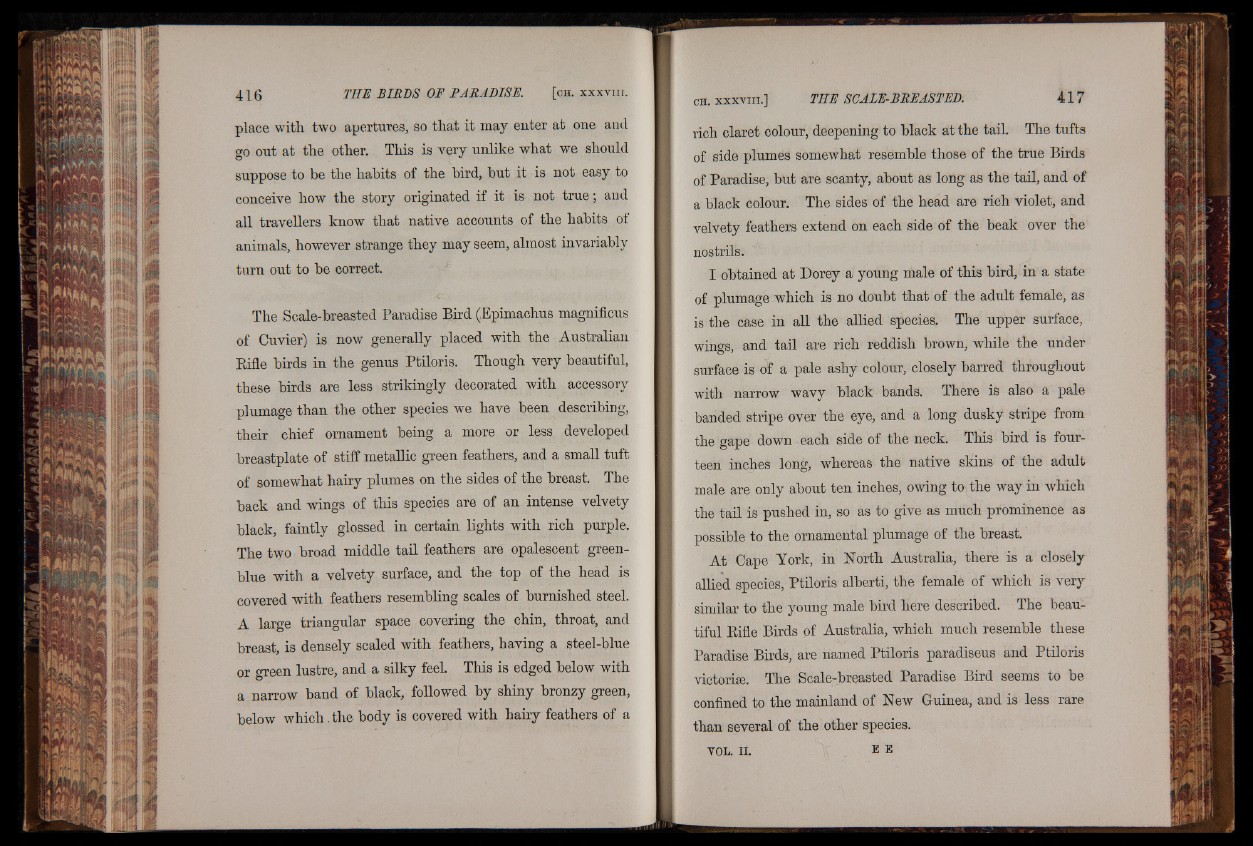
place with two apertures, so that it may enter at one and
go out at the other. This is very unlike what we should
suppose to be the habits of the bird, but it is not easy to
conceive how the story originated if it is not tru e ; and
all travellers know that native accounts of the habits ot
animals, however strange they may seem, almost invariably
turn out to be correct.
The Scale-breasted Paradise Bird (Epimachus magnificus
of Cuvier) is now generally placed with the Australian
Bifle birds in the genus Ptiloris. Though very beautiful,
these birds are less strikingly decorated with accessory
plumage than the other species we have been describing,
their chief ornament being a more or less developed
breastplate of stiff metallic green feathers, and a small tuft
of somewhat hairy plumes on the sides of the breast. The
back and wings of this species are of an intense velvety
black, faintly glossed in certain lights with rich purple.
The two broad middle tail feathers are opalescent green-
blue with a velvety surface, and the top of the head is
covered with feathers resembling scales of burnished steel.
A large triangular space covering the chin, throat, and
breast, is densely scaled with feathers, having a steel-blue
or green lustre, and a silky feeL This is edged below with
a narrow band of black, followed by shiny bronzy green,
below which. the body is covered with hairy feathers of a
rich claret colour, deepening to black at the tail. The tufts
of side plumes somewhat resemble those of the true Birds
of Paradise, but are scanty, about as long as the tail, and of
a black colour. The sides of the head are rich violet, and
velvety feathers extend on each side of the beak over the
nostrils.
I obtained at Dorey a young male of this bird, in a state
of plumage which is no doubt that of the adult female, as
is the case in all the allied species, The upper surface,
wings, and tail are rich reddish brown, while the under
surface is of a pale ashy colour, closely barred throughout
with narrow wavy black bands. There is also a pale
banded stripe over the eye, and a long dusky stripe from
the gape down each side of the neck. This bird is fourteen
inches long, whereas the native skins of the adult
male are only about ten inches, owing to the way in which
the tail is pushed in, so as to give as much prominence as
possible to the ornamental plumage of the breast.
At Cape York, in North Australia, there is a closely
allied species, Ptiloris alberti, the female of which is very
similar to the young male bird here described. The beautiful
Bifle Birds of Australia, which much resemble these
Paradise Birds, are named Ptiloris paradiseus and Ptiloris
victorias. The Scale-breasted Paradise Bird seems to be
confined to the mainland of New Guinea, and is less rare
than several of the other species.
VOL. II. E E